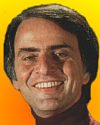Trembling Quotes (4 quotes)
In soloing—as in other activities—it is far easier to start something than it is to finish it. Almost every beginner hops off with a whoop of joy, though he is likely to end his flight with something akin to the D.T.’s.
In 20 Hrs., 40 Min. (1928), 55.
Kepler’s discovery would not have been possible without the doctrine of conics. Now contemporaries of Kepler—such penetrating minds as Descartes and Pascal—were abandoning the study of geometry ... because they said it was so UTTERLY USELESS. There was the future of the human race almost trembling in the balance; for had not the geometry of conic sections already been worked out in large measure, and had their opinion that only sciences apparently useful ought to be pursued, the nineteenth century would have had none of those characters which distinguish it from the ancien régime.
From 'Lessons from the History of Science: The Scientific Attitude' (c.1896), in Collected Papers (1931), Vol. 1, 32.
Like an earthquake, true senility announces itself by trembling and stammering.
In Charlas de Café: pensamientos, anécdotas y confidencias (1920, 1967), 95. (Café Chats: Thoughts, Anecdotes and Confidences). As (loosely) translated in Peter McDonald (ed.) Oxford Dictionary of Medical Quotations (2004), 83. From the original Spanish, “La verdadera, la aterradora, la inexorable senilidad comienza en la fase de temblor y balbuceo, es decir, cuando el cerebro está salpicado de placas seniles y entendimiento y carácter retroceden al estado infantil. A semejanza del edificio cuarteado por el terremoto, la citada agitación anuncia ruina inminente.”
A more complete translation attempted by Webmaster with Google Translate is: “True, the terrifying, the inexorable senility begins at the stage of tremor and slurred speech, i.e. when the brain is dotted with senile plaques, and understanding and character regress to the infantile state. Like the building cracked by the earthquake, said agitation announces impending doom.”
Never say there is nothing beautiful in the world anymore. There is always something to make you wonder in the shape of a tree, the trembling of a leaf.
In The Schweitzer Album: A Portrait in Words and Pictures (1965), 39.
 In science it often happens that scientists say, 'You know that's a really good argument; my position is mistaken,' and then they would actually change their minds and you never hear that old view from them again. They really do it. It doesn't happen as often as it should, because scientists are human and change is sometimes painful. But it happens every day. I cannot recall the last time something like that happened in politics or religion.
(1987) --
In science it often happens that scientists say, 'You know that's a really good argument; my position is mistaken,' and then they would actually change their minds and you never hear that old view from them again. They really do it. It doesn't happen as often as it should, because scientists are human and change is sometimes painful. But it happens every day. I cannot recall the last time something like that happened in politics or religion.
(1987) -- 


